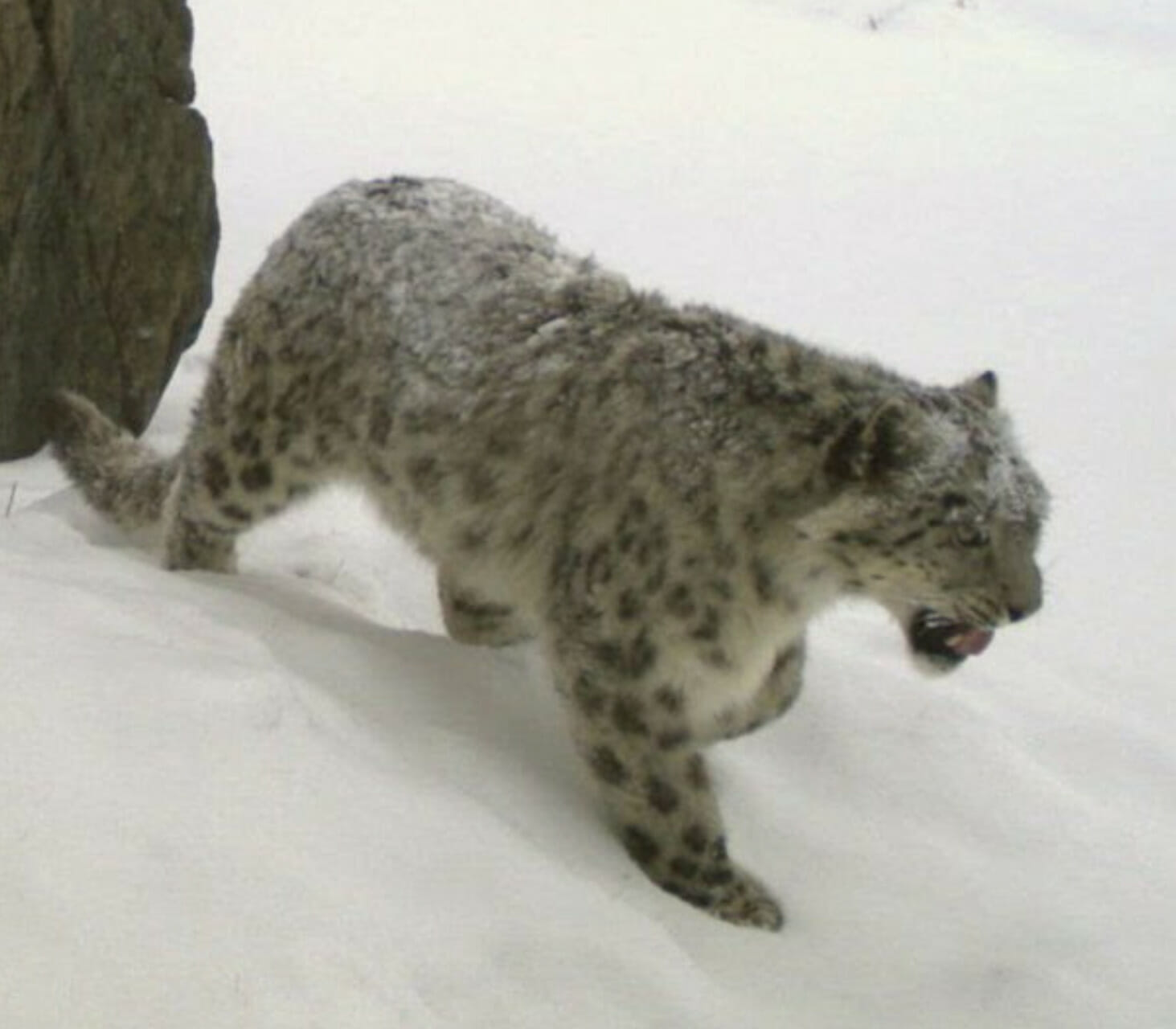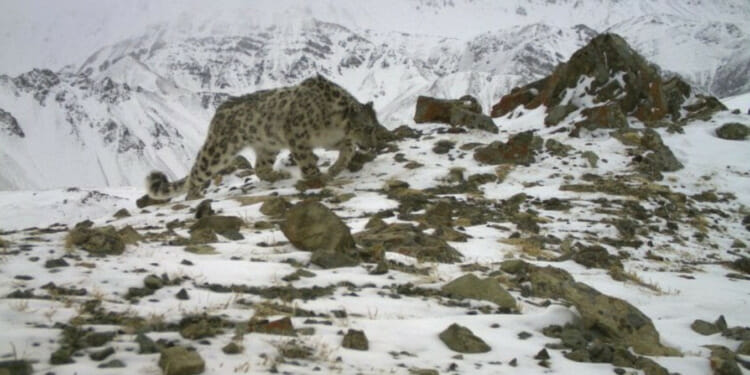The farming of livestock used in the production of cashmere could be causing a significant decline in the population of snow leopards in the area, according to new research. This decline could lead to the extinction of the snow leopard in some areas if allowed to continue unabated, the researchers believe.
Research from the University of Florence, in collaboration with the Museum of Sciences of Trento (MUSE) and other international partners including Panthera, the global wild cat conservation organization, studied the movement patterns on separate occasions, years apart, of snow leopards in Mongolia in areas near to livestock populations used to create cashmere. Globalisation has led to an increase in demand and as a result production of cashmere, through the breeding of more livestock for this purpose. Cashmere wool is created from breeds of goat found only in parts of Asia, including Mongolia, China and Afghanistan.
Valentina Oberosler, post-doc researcher at MUSE, explains that “the snow leopard is the least known and one of the rarest of the big cats: its distribution is fragmented, its populations are decreasing. It lives only in remote mountain ranges of Central Asia, from Nepal to Siberia: it is estimated that a few thousand individuals survive. This is why it is important to understand the main causes of its decline and to provide useful recommendations for the correct management of the environment in which it lives.”
Livestock farming in Mongolia is a key contributor to its economic activity, accounting for about 90 percent of agricultural production and employing one in four Mongolians. The country comprises more than 70 million livestock, including 32 million sheep and 29 million goats.
Researchers placed “photo traps” – cameras that capture wildlife without the need for direct human operation – in protected areas (PAs) in the Altai Mountains of Mongolia, where snow leopards and livestock are present. Data was collected from these photo traps during study campaigns in 2015 and 2019.
The data suggested that snow leopard presence decreased, due to fewer sightings of them by these photo traps. The presence of ibex likely also decreased, which suggests a strong predator-prey relationship, although the disappearance of the snow leopard’s prey is likely not the sole cause of the absence.
The study implies that snow leopards are disturbed by the actions of livestock, which disrupts their typical nighttime hunting patterns. Conversely, wolf populations, the wolf being another key predator in the area, are unaffected by the increase. This is likely due to wolves being more “opportunistic” hunters, with a population more widely spread across the region, taking shelter in protected areas where they are not as hunted.
Dr Francesco Rovero, a researcher from the Department of Biology at the University of Florence who also works for Panthera, says that “the topic is of great conservation relevance and relatively understudied. In particular, whether livestock entering PAs represents an attraction to snow leopards or a disturbance has not been sufficiently addressed.”
Related Articles: Animal Lives Over Human Entertainment: Driving Change for ‘Big Cats’ in the U.S. | Conserving Dwindling Jaguar Populations: In Conversation with Fernando Tortato | Pantanal, the World’s Biggest Wetland, is on Fire – Why You Need to Worry
There are also wider ecological implications of greater livestock presence in the region. Rovero argues that the “decline of these wild species indicates the severe impact of livestock, and hence an alteration of the functionality of the ecosystem overall.” There are concerns that this could have “cascading” effects on the ecosystem, with overgrazing affecting the quality of the grasslands and its soil, which in turn impacts different species of wildlife and plants.
The results do suggest quite a significant decline in snow leopard numbers – so could this lead to the extinction of the snow leopards in some areas? Dr Rovero thinks so, both “in terms of declining numbers and progressive isolation… which may tend to retreat to an interior protected habitat, and hence lose the chance to connect genetically with other populations.”

To counter this encroachment of livestock into protected areas, the researchers conclude that these areas should more effectively limit the grazing of livestock, with “on the ground” enforcement, grazing regimes, and new policies from the government to subsidise wildlife conservation. With the “co-occurrence” of wolves and livestock, they also suggest that “predator-proof corrals” could be implemented to rear animals safely at night.
This research is an example of how globalization and an increase in demand can affect local ecosystems in a way that can effectively displace local wildlife, with the potential for wider impacts on the ecosystem at large. The results indicate a clear need for more regulation to stop the effects from worsening.
For the future of snow leopards, Rovero concludes, “in order not to risk compromising the fragile biological equilibrium, it will be important to favor breeding practices that are more compatible with the long-term survival of the large mammals of the mountains of Central Asia.”
This leaves us with a set of difficult-to-resolve ethical questions: To what extent should the demand for a luxury good be allowed to dictate what happens to an ecosystem? And if countered, in order to “preserve” the natural balance of animals-humans-nature, how will this affect employment in a population, like that of Mongolia, that is heavily dependent on its livestock to earn a decent livelihood? What can be done to meet the needs of both the ecosystem and the humans who live in it?
Editor’s Note: The opinions expressed here by Impakter.com columnists are their own, not those of Impakter.com. — In the Featured Photo: Snow Leopard. Featured Photo Credit: Panthera.










